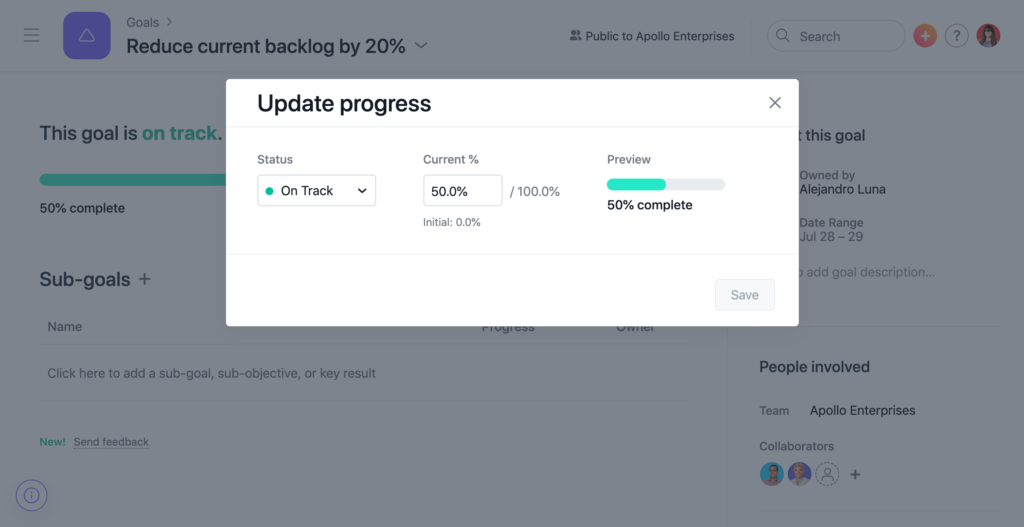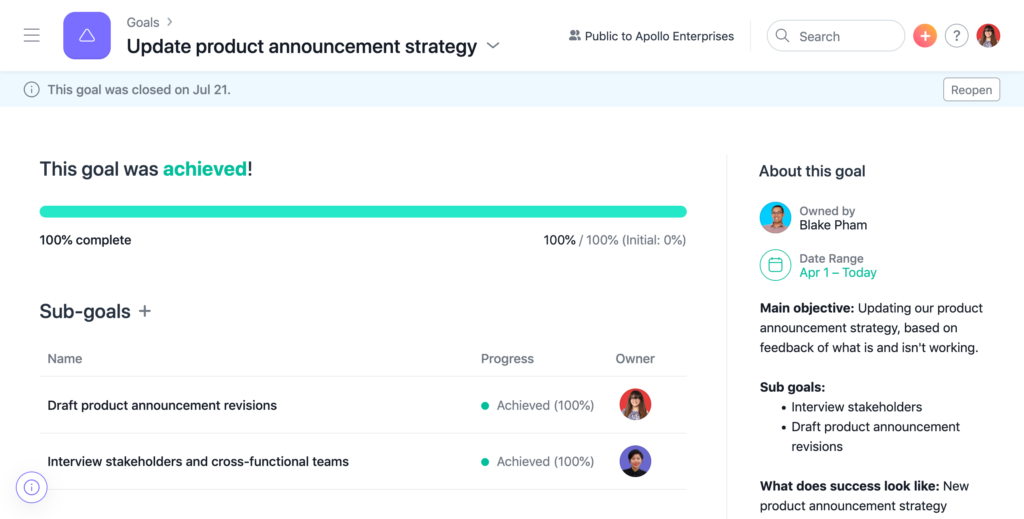Asana tips: 3 ways to set achievable goals

Read this article in French, German, Portuguese, Spanish, or Japanese.
We’ve all gone through goal-setting exercises at work—but how many of those goals felt relevant, achievable, or personal? Despite the time and energy most teams put into goal-setting at the beginning of the quarter or year, we rarely see the same level of follow-through. That’s because workplace goals are often disconnected from our real work.
To set achievable goals, we need to connect them to our day-to-day work. Understanding how your daily work connects to your goals doesn’t just make it easier to set goals. According to the Anatomy of Work Index, employees who have clarity on how their work impacts their organization are 2X as motivated as their counterparts.
With the launch of Goals, teams finally have a way to connect their work to their organization’s mission. But in order to get the most out of them, your team needs to know how to set great goals. With that in mind, here are three ways to set achievable goals with Asana:
1. Set specific goals
A goal is only useful if you know when it’s due, how you’ll measure it, and what, exactly, you’re aiming to accomplish. Specific goals also provide a blueprint for what steps you need to take in order to get there.
When you’re setting a goal, you should clarify:
- The goal’s main objective in an action-oriented phrase or sentence
- Details for how you’ll achieve your goal
- How you’ll measure success
- What constitutes hitting your goal, partially hitting it, or missing it

2. Check in on progress regularly
Whether you’re setting organization-wide or team-specific goals, make sure you check in on your goals periodically. Instead of setting and forgetting it, goals should be part of the day-to-day work you do. By scheduling regular check-ins, you can make sure you’re aligning work with your overall objective.
With Goals, you can set team and company goals then connect your work at the project or Portfolio level for real-time insight into how your team’s work directly contributes to strategic objectives. You can see what percentage of your goal you’ve completed, and share progress updates with all goal stakeholders.

3. Review your impact
If you’re setting goals consistently, there are going to be some goals you don’t hit. That’s okay—ideal, even. At Asana, we aim to hit about 70% of our goals. If we hit more than that, the goals were too easy—if we don’t hit 70%, maybe too many goals were stretch goals.
Whether you fully completed your goal, partially hit it, or missed it altogether, sit down with your team once you hit your deadline. Evaluate what went well and what blockers you had, if any. What factors affected the goal’s progress? What can you do better next time? By having these conversations, you can refine and improve your team’s goal setting process to set better goals.

Set goals the right way
With Goals, you can connect your daily work to your Team or Organization-level goals. At Asana, we call this the pyramid of clarity. To create the pyramid of clarity within your team or organization, start with the OKR (Objectives and Key Results) goal-setting approach.
Learn more about how to set OKRs in our ebook.


